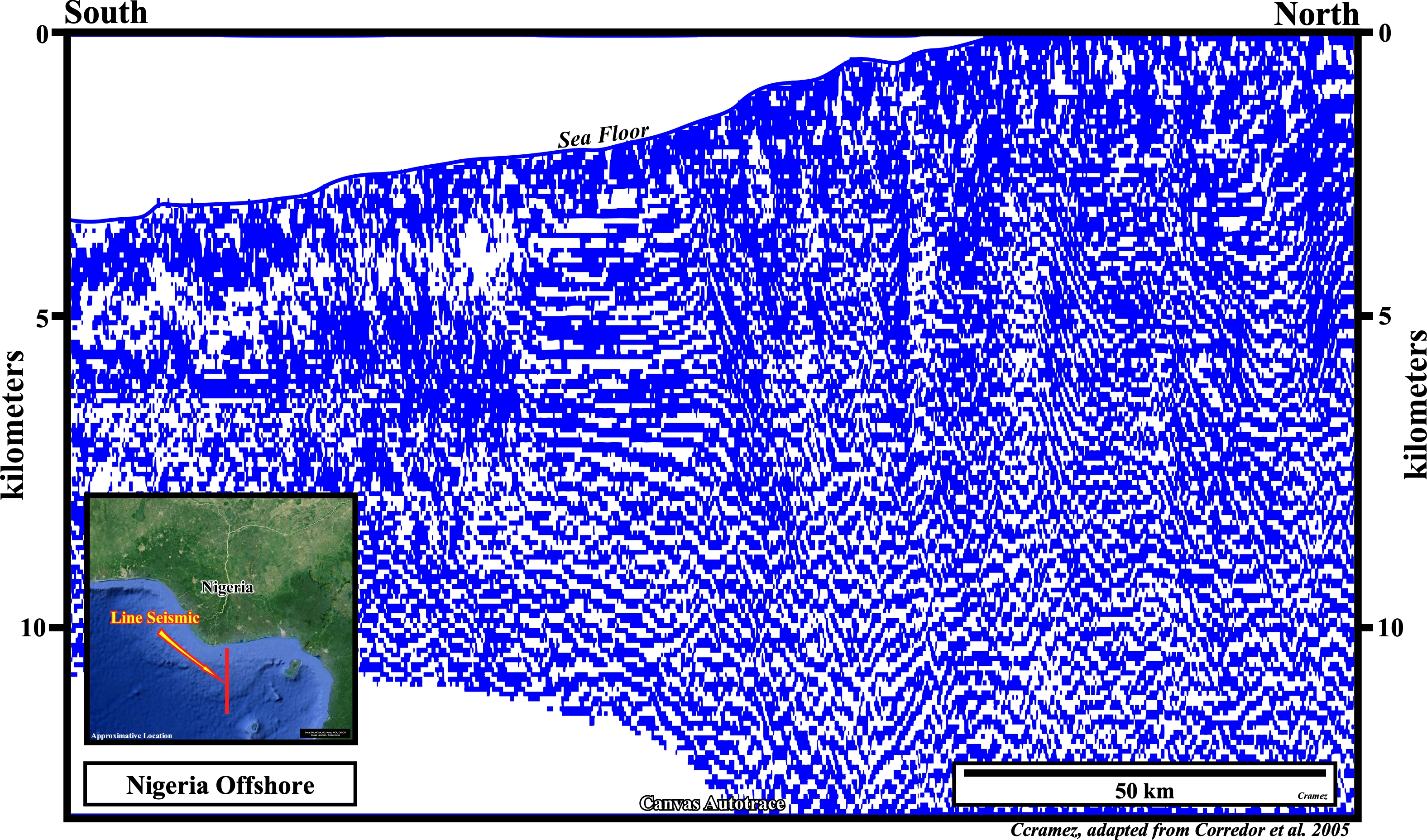
.jpg)
Nigeria Offshore

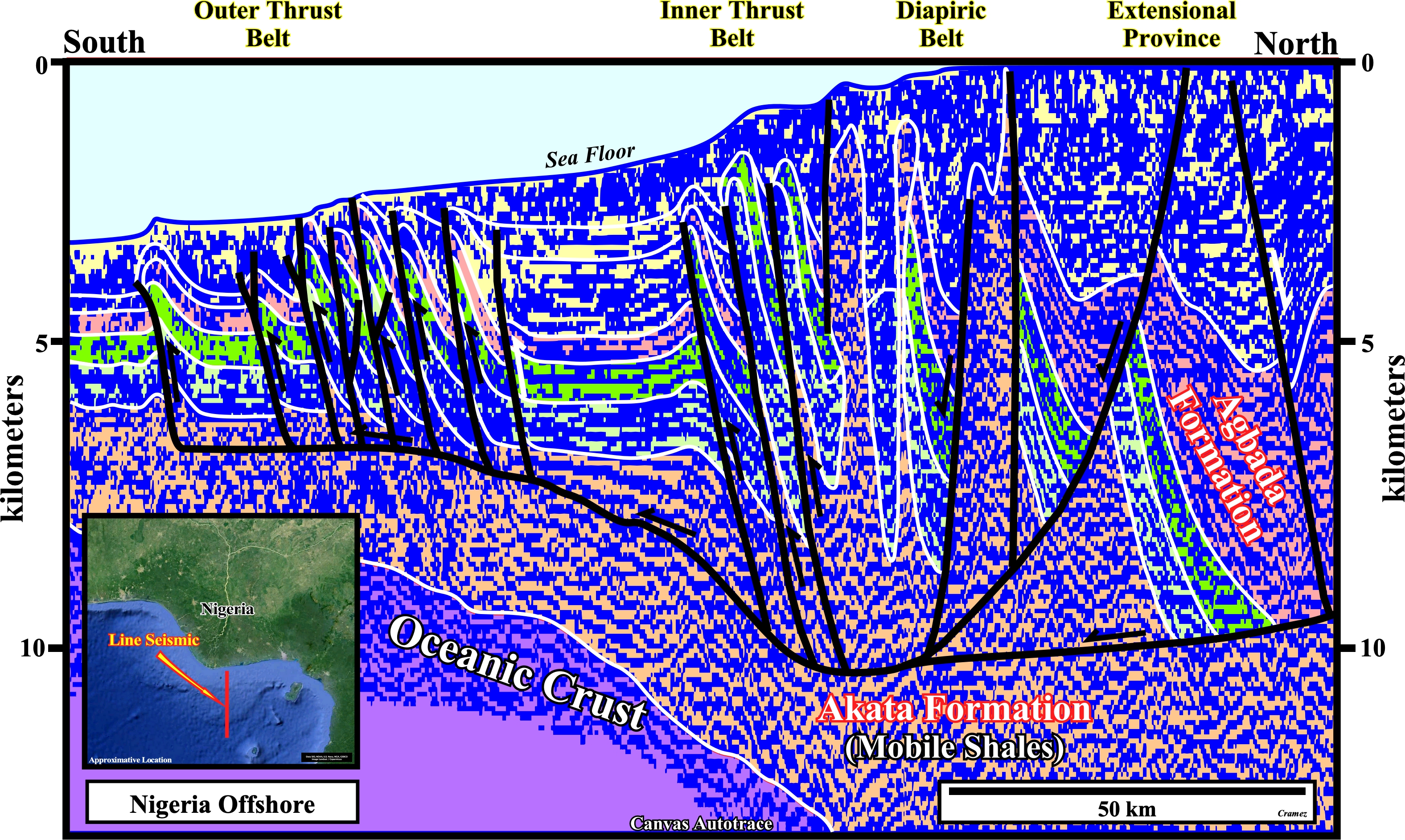
Before the breakup of the Gondwana lithosphere several rift-type basins opened in Nigeria onshore and Central Africa during the lengthening of the lithosphere. The breakup of the Gondwana lithosphere occurred in Nigeria area during the Albian / Aptian. During the Cenozoic, the Niger Delta Building prograded into the South Atlantic over Cretaceous deep water sediments and the oceanic crust, each side of the Charcot fracture zone forming two major lobes complexes. The stacking of the delta sediments (do not confuse a delta with a delta building: the thickness of a delta ranges between 20-60 meters, while the thickness of a delta building can exceed the height of several thousands of meters, since it corresponds to a progradational stacking of deltas) caused gravitational collapse on the underlying over-pressured Akata shale, forming morphological traps by juxtaposition in the up-dip diapiric belt and extensional province and structural traps in down-dip contraction province (outer and inner thrust belts).
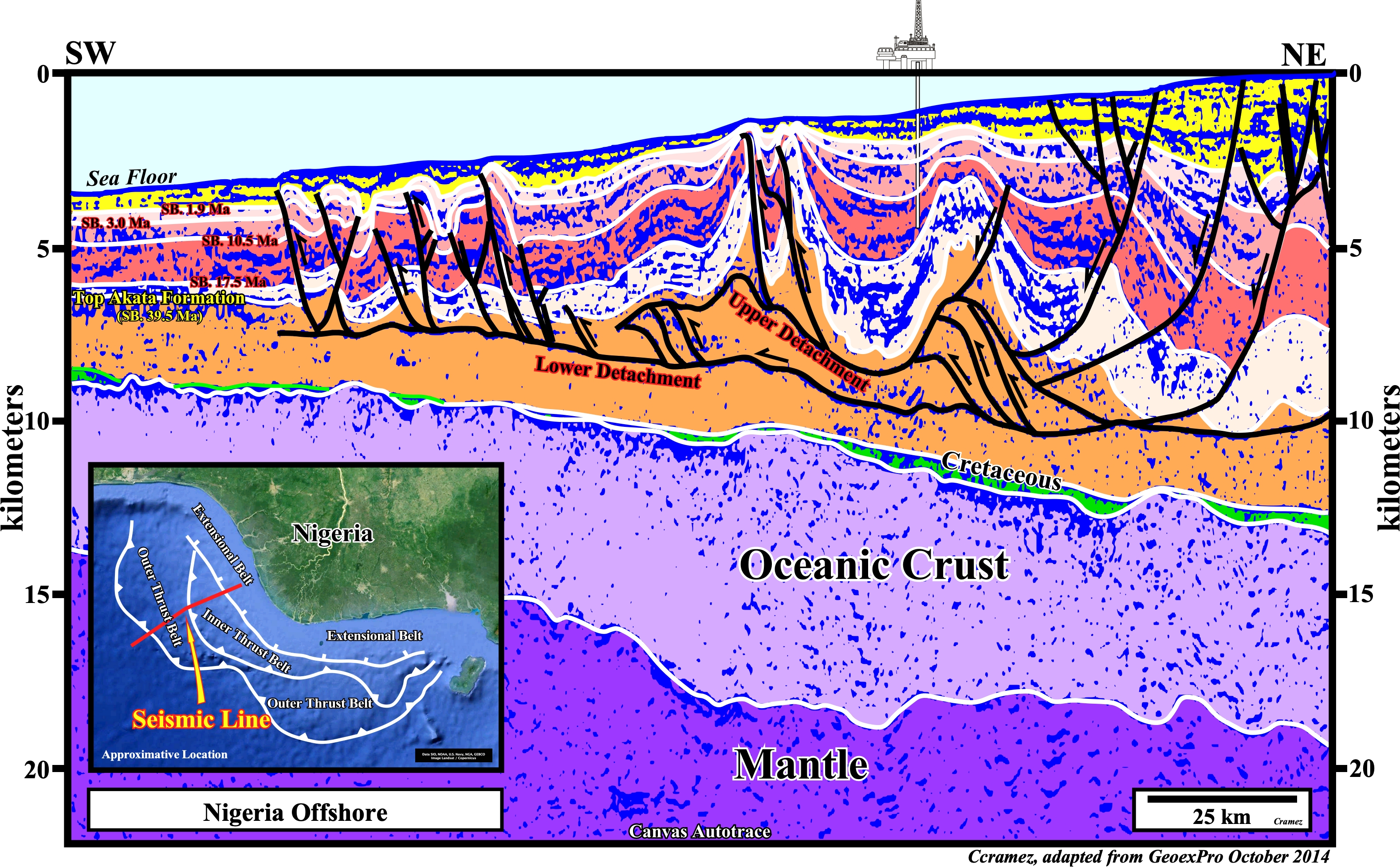
On this tentative interpretation of a Canvas autotrace of a seismic line of the western Niger deltaic building (western lobe complex), i.e., located northward of the Charcot fracture zone, the extensional province (extensional tectonic regime , i.e., σ1 vertical in which the sediments area lengthened) and the two thrust belts (outer & inner), which form the compressional province (compressional tectonic regime, i.e., σ1 horizontal, in which the sediments are shortened) are, easily, recognized. Notice the presence of two detachment surface in the Akata shales, particularly, in the At aka shales of the inner thrust belt. Each of these tectonic provinces provide different types of migration-entrapment petroleum sub-systems. The compressional province is, mainly, characterized structural traps (reservoirs rocks with four way dip structures), the extensional province is, mainly characterized by non-structural traps, particularly, morphological traps by juxtaposition ("fault traps" of the certain American geoscientist, although a fault never traps, what trap are the sealing rocks of the opposed faulted block in juxtaposition to the reservoir-rock). The mantle and the oceanic crust are identified with difficulty.
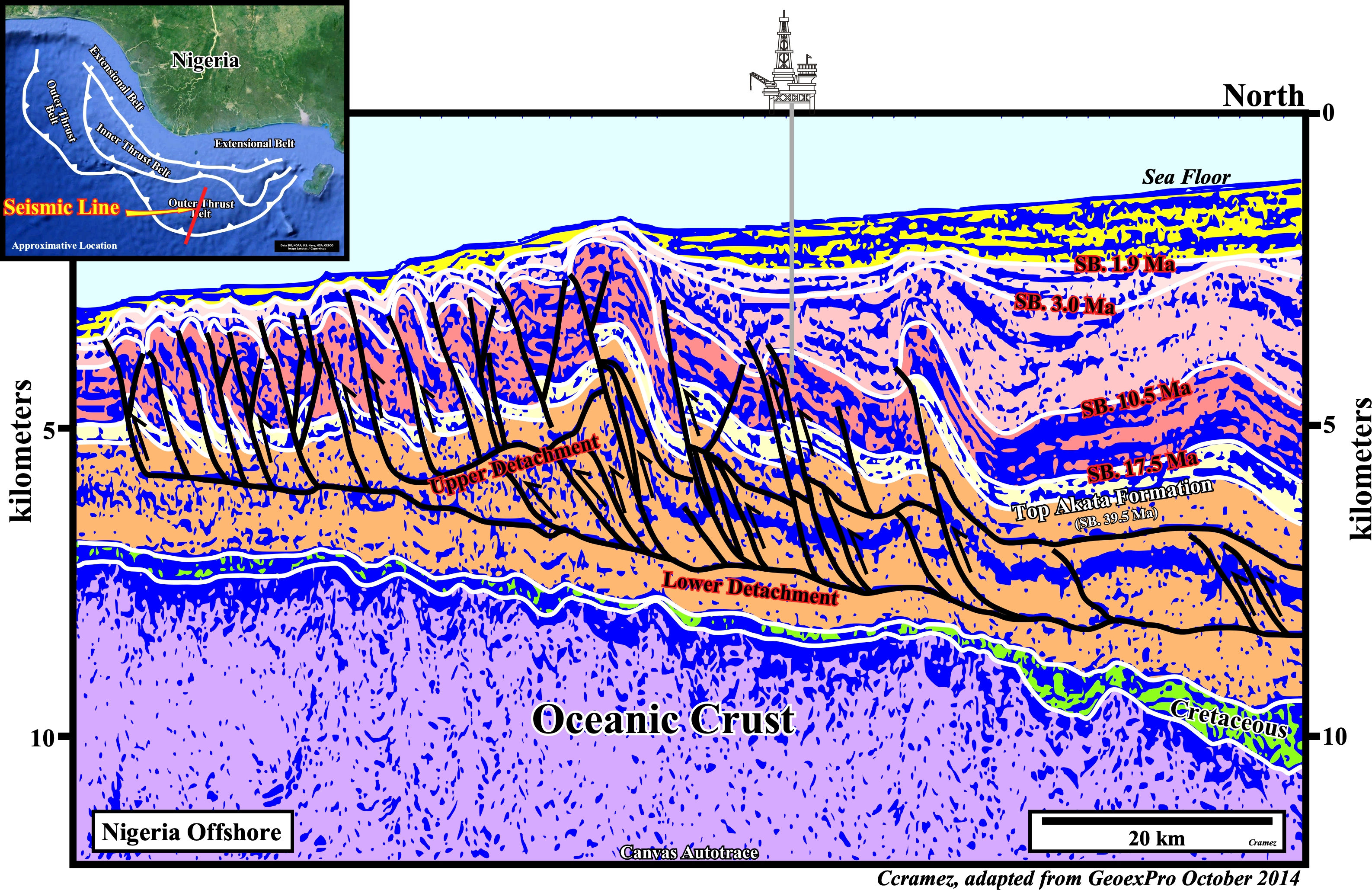
The same comments we made in the previous figure can be done for his tentative interpretation of a Canvas autotrace of a seismic line located in the eastern Niger lobe, i.e, southward of the Charcot fracture zone, which seems separate both Niger delta building lobes. The arcuate structures (see location map) are segmented by dip-oriented radial grabens and delta toe oblique extensional tear faults, which were formed by along-strike extensional strains during spreading. Basement steps seem to to have partitioned delta toe gravity spreading into dual, divergent directions. The western Niger delta building lobe has potentially spread down-dip more rapidly due to a thicker or more highly over-pressured underlying Akata Formation shale detachment. The western lobe spreading may have produced the Niger Delta toe "dual lobe" geometry, perturbed up-dip Niger Delta top growth fault patterns implying western lobe toe thrusts have been very active (J. E. Wu et al., 2015).
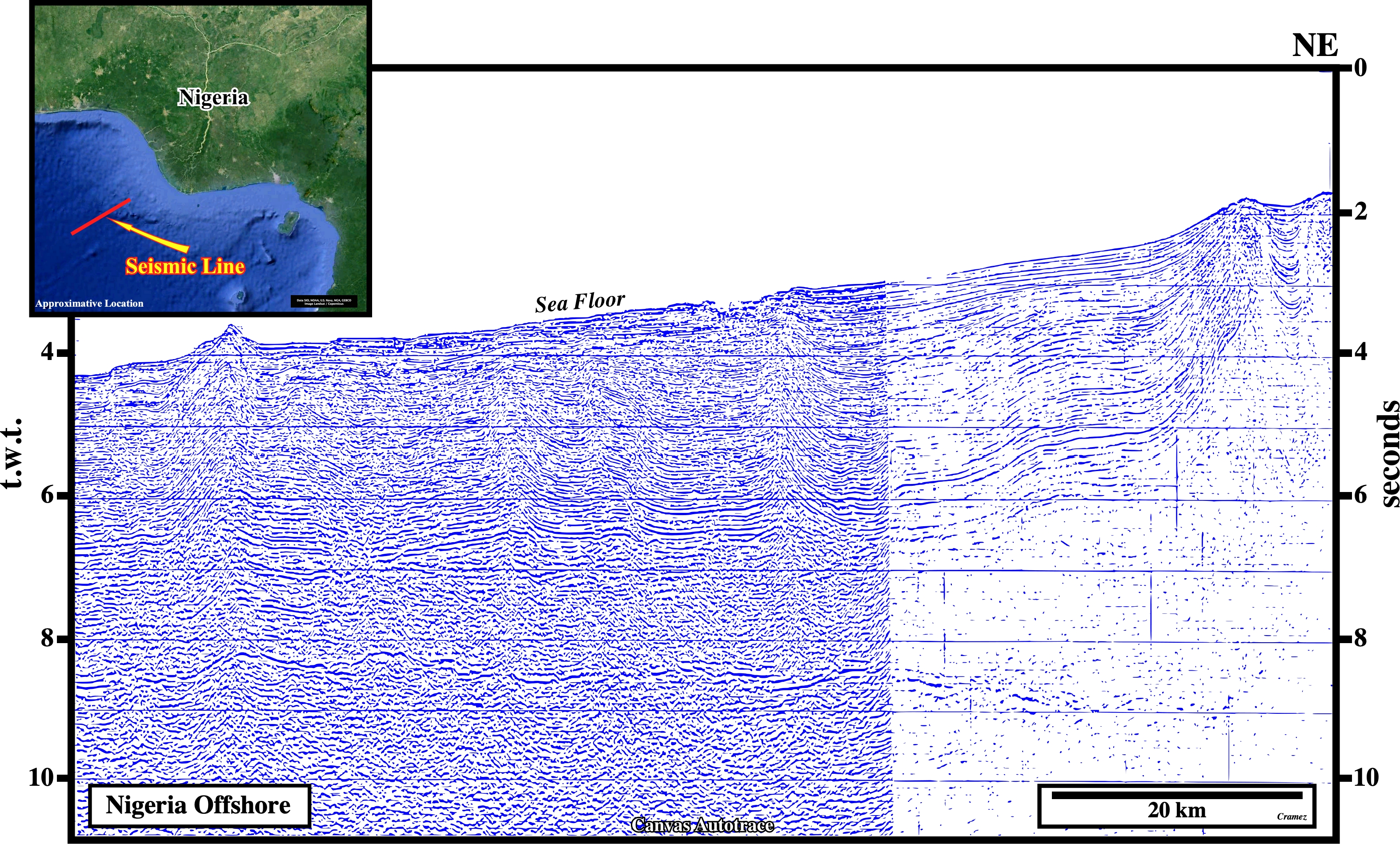

On this tentative interpretation two opposite detachment surfaces and thrust faults with opposite vergence are visible. The long seaward dipping detachment surface, in which the westward looking thrust faults rooted, is associated with the compressional tectonic regime, which counteracts the up-dip extensional tectonic regime. The detachment surface visible on the left side of the tentative interpretation, in which a major thrust fault looking eastward, cannot be associated with first one and it cannot be explained as the first one. A more distal Canvas autotrace gives may be a possible explanation of the thrust faults looking eastward (next autotrace).
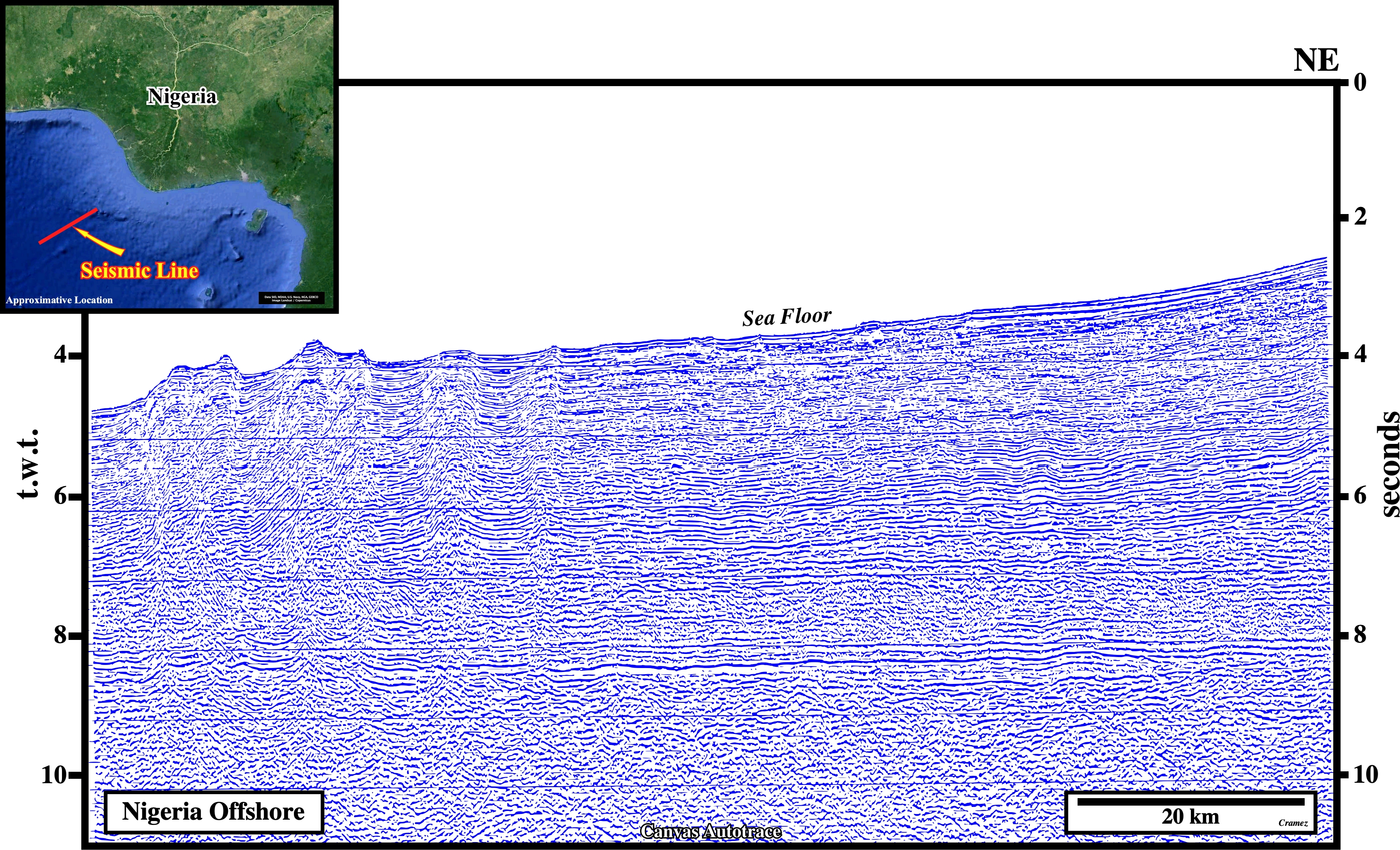
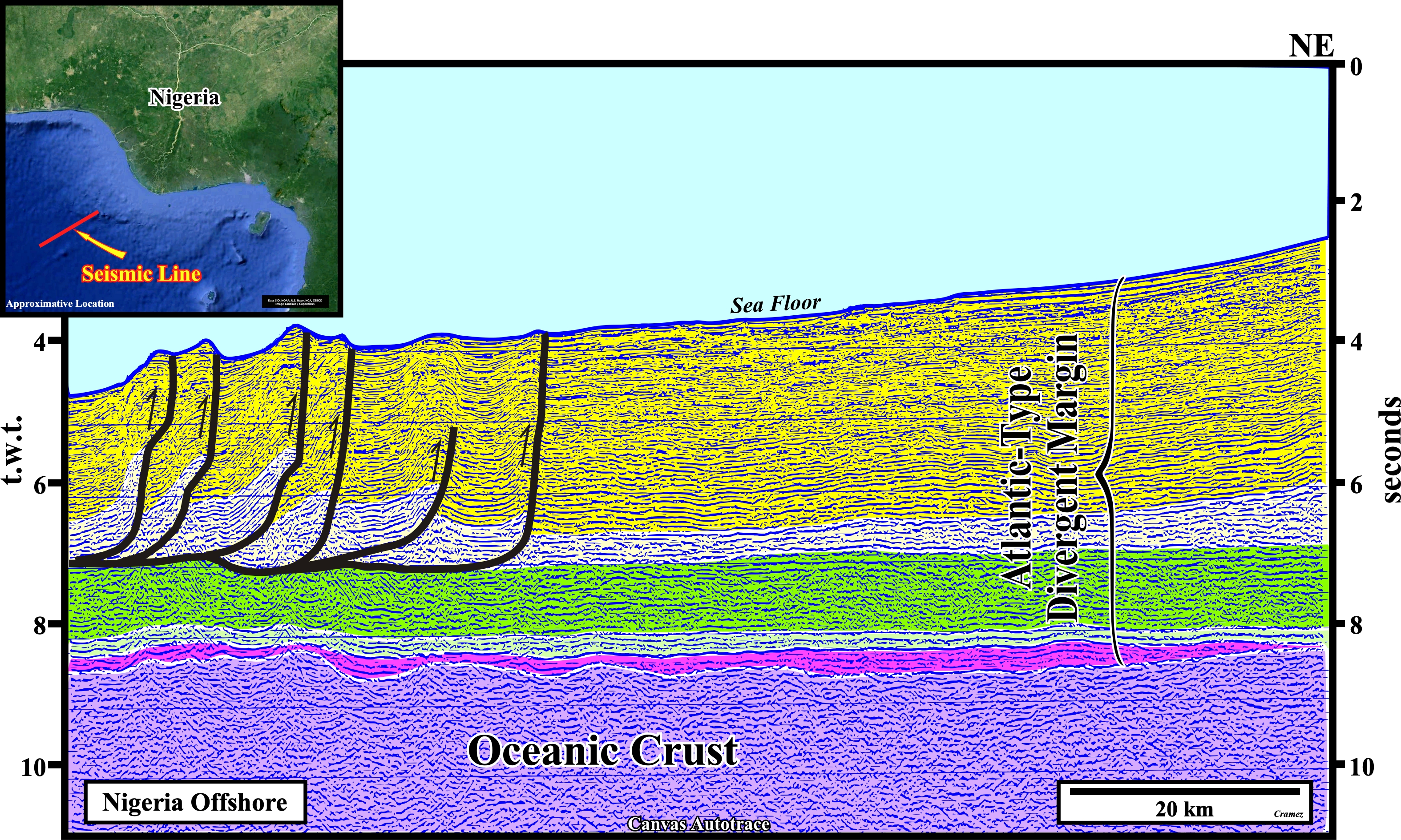
As depicted, on this tentative geological interpretation, the thrust faults looking eastward, obviously, cannot be explained as a counteraction to the extensional tectonic regime occurring in the continental slope and conventional offshore. Several geoscientist advance the conjecture that such thrust faults, with a eastward vergence, can be a consequence confined stress induced by the morphology of oceanic ridges. In fact, near the mid-oceanic ridge, the bathymetry is quite small, but, progressively, it increases toward the abyssal plain, which can induce an horizontal stress, roughly, perpendicular to the global strike of the mid-oceanic ridge (rift valley).
Send E-mails to carlos.cramez@bluewin.ch with comments and suggestions to improve this atlas.
Copyright © 2001 CCramez
Last update:
2022